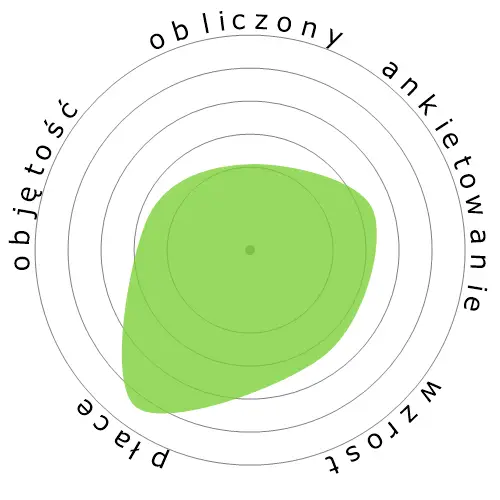Piloci linii lotniczych, drugi piloci i inżynierowie pokładowi




Ludzie również oglądali
Obliczone ryzyko automatyzacji
Wysokie ryzyko (61-80%): Zawody w tej kategorii stoją przed znaczącym zagrożeniem ze strony automatyzacji, ponieważ wiele z ich zadań może być łatwo zautomatyzowanych przy użyciu obecnych lub bliskich przyszłości technologii.
Więcej informacji na temat tego, czym jest ten wynik i jak jest obliczany, jest dostępne tutaj.
Ankieta użytkownika
Nasi goście zagłosowali, że jest małe prawdopodobieństwo, iż ten zawód zostanie zautomatyzowany. Jednakże, poziom ryzyka automatyzacji, który wygenerowaliśmy, sugeruje znacznie większą szansę na automatyzację: 65% szans na automatyzację.
Jakie są Twoje zdanie na temat ryzyka automatyzacji?
Jakie jest prawdopodobieństwo, że Piloci linii lotniczych, drugi piloci i inżynierowie pokładowi zostanie zastąpione przez roboty lub sztuczną inteligencję w ciągu najbliższych 20 lat?
Nastroje
Poniższy wykres jest zamieszczany wszędzie tam, gdzie istnieje znaczna liczba głosów, aby przedstawić istotne dane. Te wizualne reprezentacje pokazują wyniki ankiet użytkowników w czasie, dostarczając istotnych wskazówek dotyczących trendów nastrojów.
Nastroje w czasie (rocznie)
Wzrost
Liczba ofert pracy na stanowisku 'Airline Pilots, Copilots, and Flight Engineers' ma wzrosnąć 5,0% do 2033
Całkowite zatrudnienie oraz szacowane oferty pracy
Zaktualizowane prognozy mają być dostępne 09-2025.
Płace
W 2023, mediana rocznej pensji dla 'Airline Pilots, Copilots, and Flight Engineers' wynosiła 219 140 $, czyli 105 $ za godzinę.
'Airline Pilots, Copilots, and Flight Engineers' otrzymali wynagrodzenie wyższe o 356,0% od średniej krajowej, która wynosiła 48 060 $
Płace z biegiem czasu
Objętość
Od 2023 roku zatrudnionych było 93 670 osób na stanowisku 'Airline Pilots, Copilots, and Flight Engineers' w Stanach Zjednoczonych.
To oznacza około 0,06% zatrudnionej siły roboczej w całym kraju.
Inaczej mówiąc, około 1 na 1 tysiąc osób jest zatrudnionych jako 'Airline Pilots, Copilots, and Flight Engineers'.
Opis stanowiska pracy
Pilotuj i nawiguj lot samolotów o stałym skrzydle, zazwyczaj na trasach regularnych przewoźników lotniczych, w celu transportu pasażerów i ładunków. Wymagane jest posiadanie certyfikatu Federalnego Transportu Lotniczego oraz oceny dla konkretnego typu używanego samolotu. Obejmuje to pilotów linii lotniczych na szczeblu regionalnym, krajowym i międzynarodowym, a także instruktorów lotów pilotów linii lotniczych.
SOC Code: 53-2011.00


Komentarze
Leave a comment
Capacity to AI takeover already exist but passanger trust will take longer to be achieved.
20 years it will start with cargo flights.
Another 10 years after maybe commercial flights.
If an accident happens like where two planes go down due to MCAS designed by boeing. This probably set it back years for automation.
Look at Sully landing on the Hudson can a computer do that?
Miracle on the Hudson that was down to skill and knowledge and a brilliant Captain and First Office.
That is for the pilot. For the co-pilot, it is highly likely because the A.I. doesn't need to do all the instructions; they just do half of it, and the rest the pilot will handle.
For the flight engineer, I think it has a lower chance of getting replaced by A.I. or some sort of computer.
But this is overall just my opinion.
Zostaw odpowiedź na temat tego zawodu